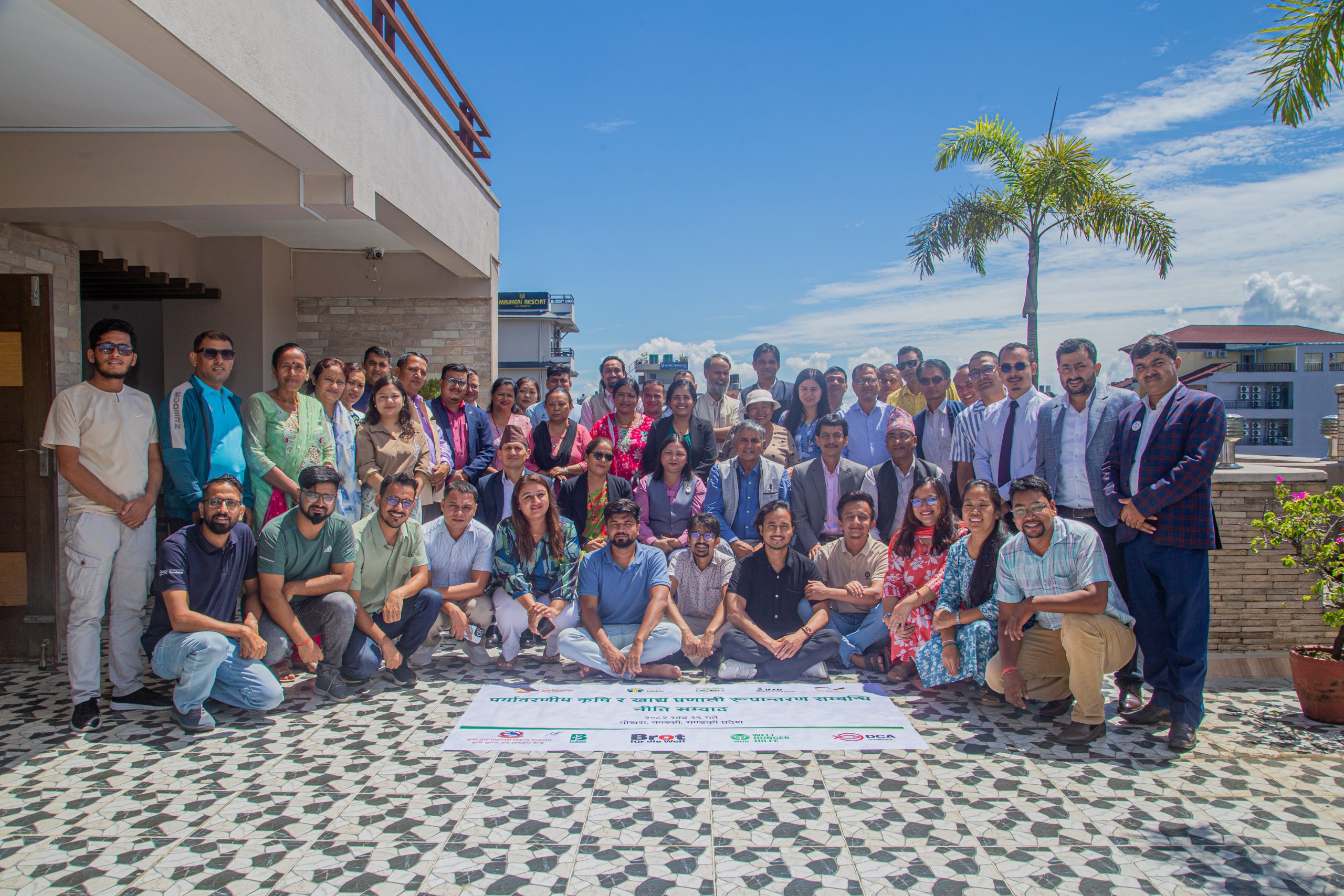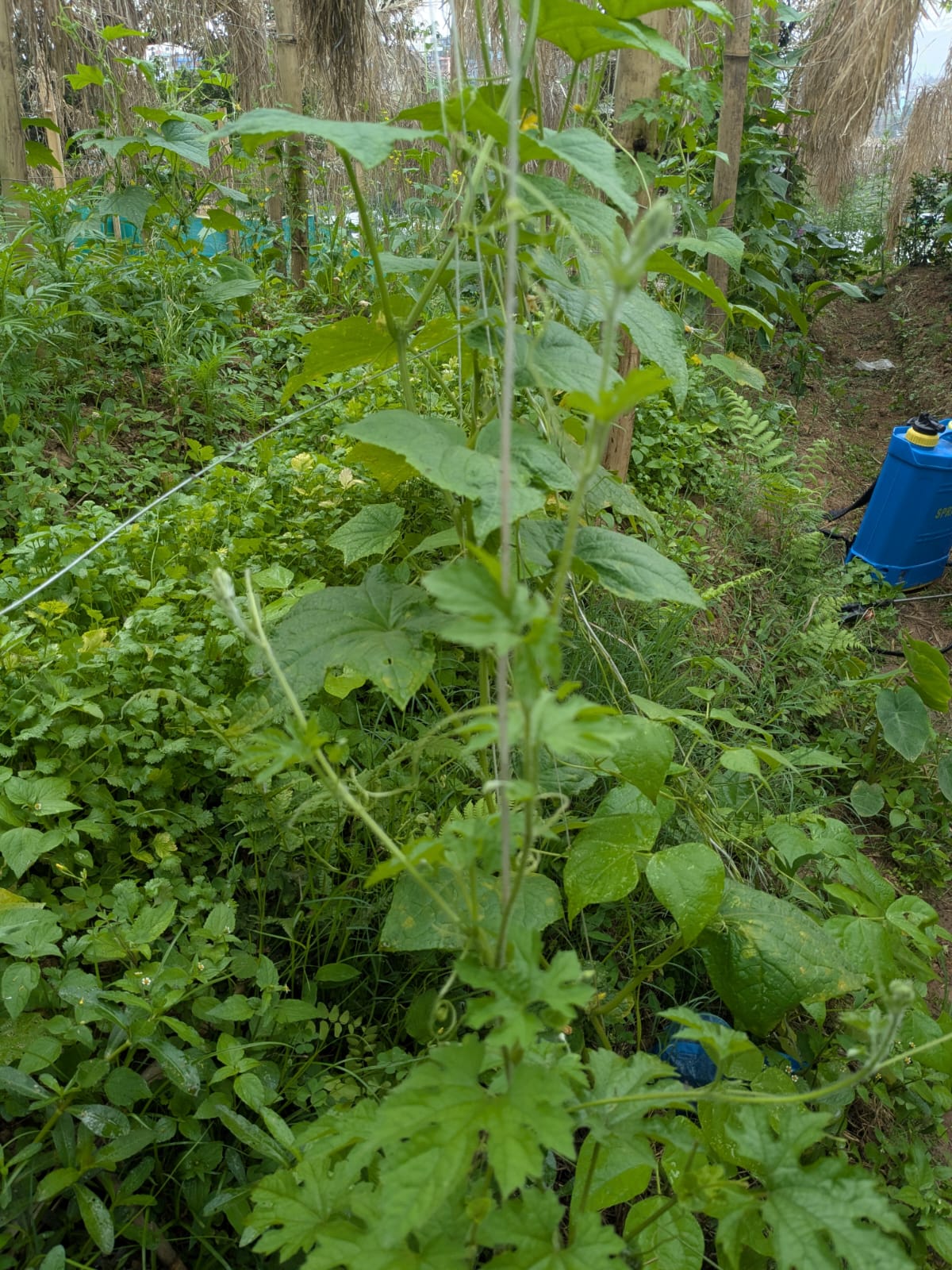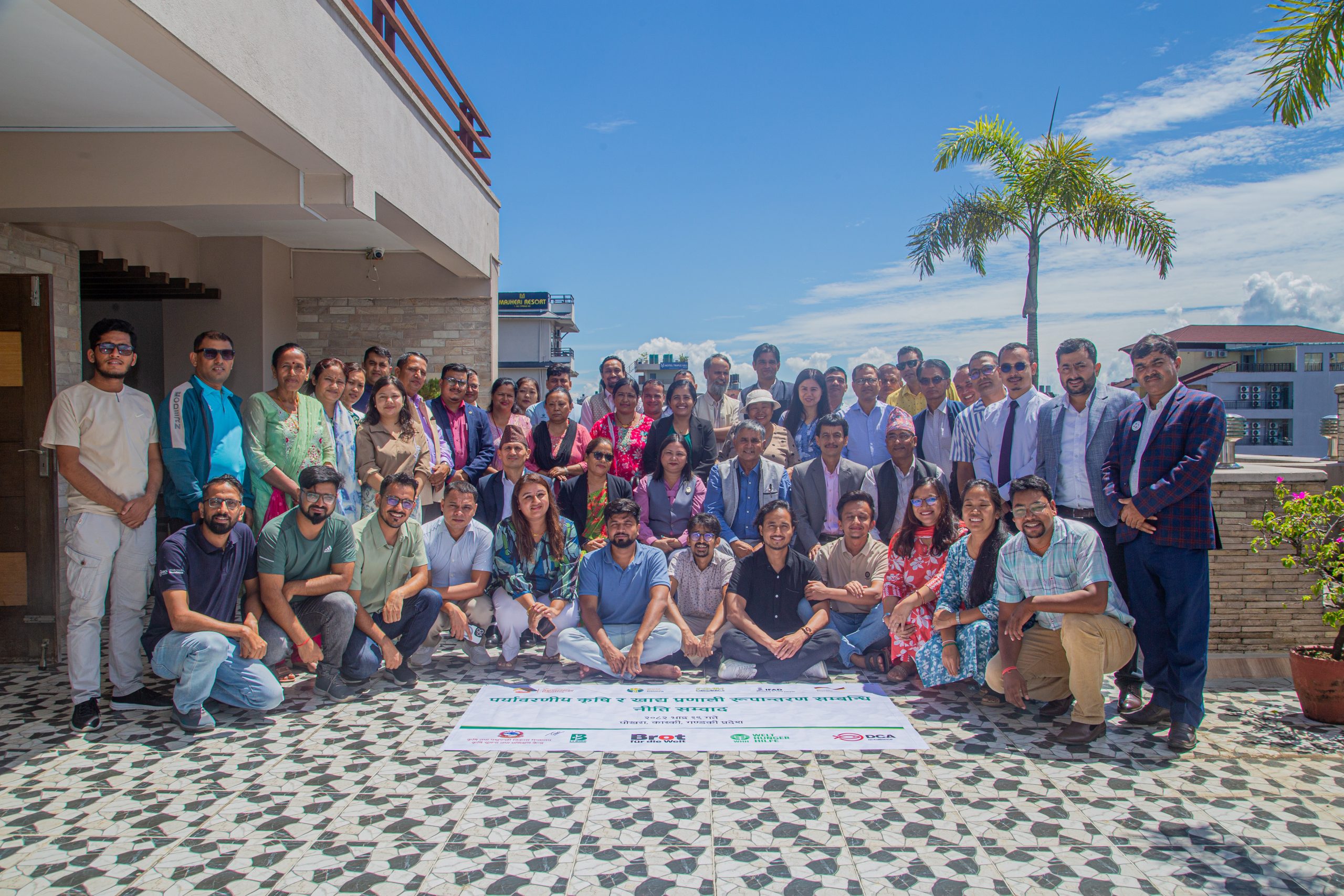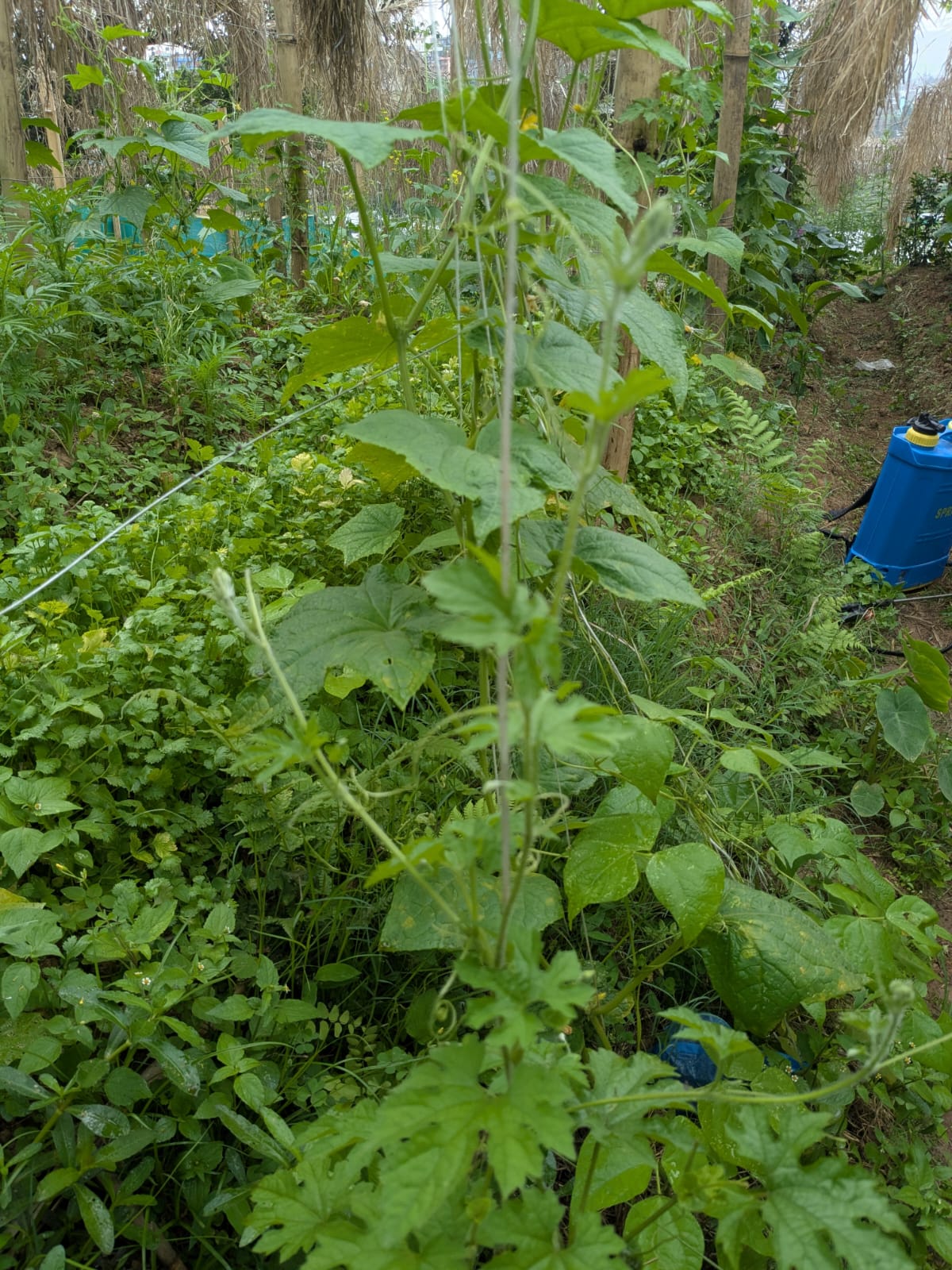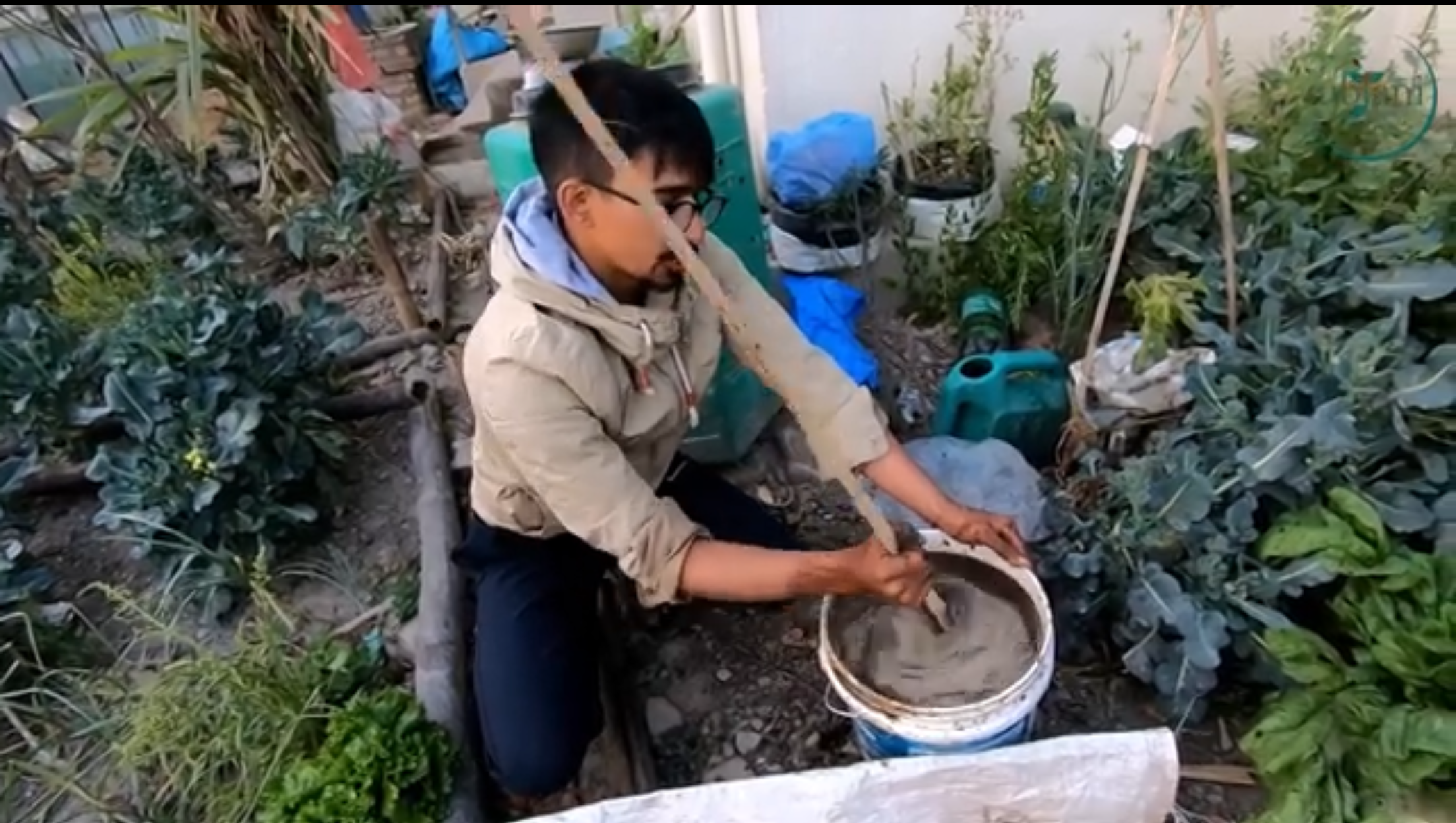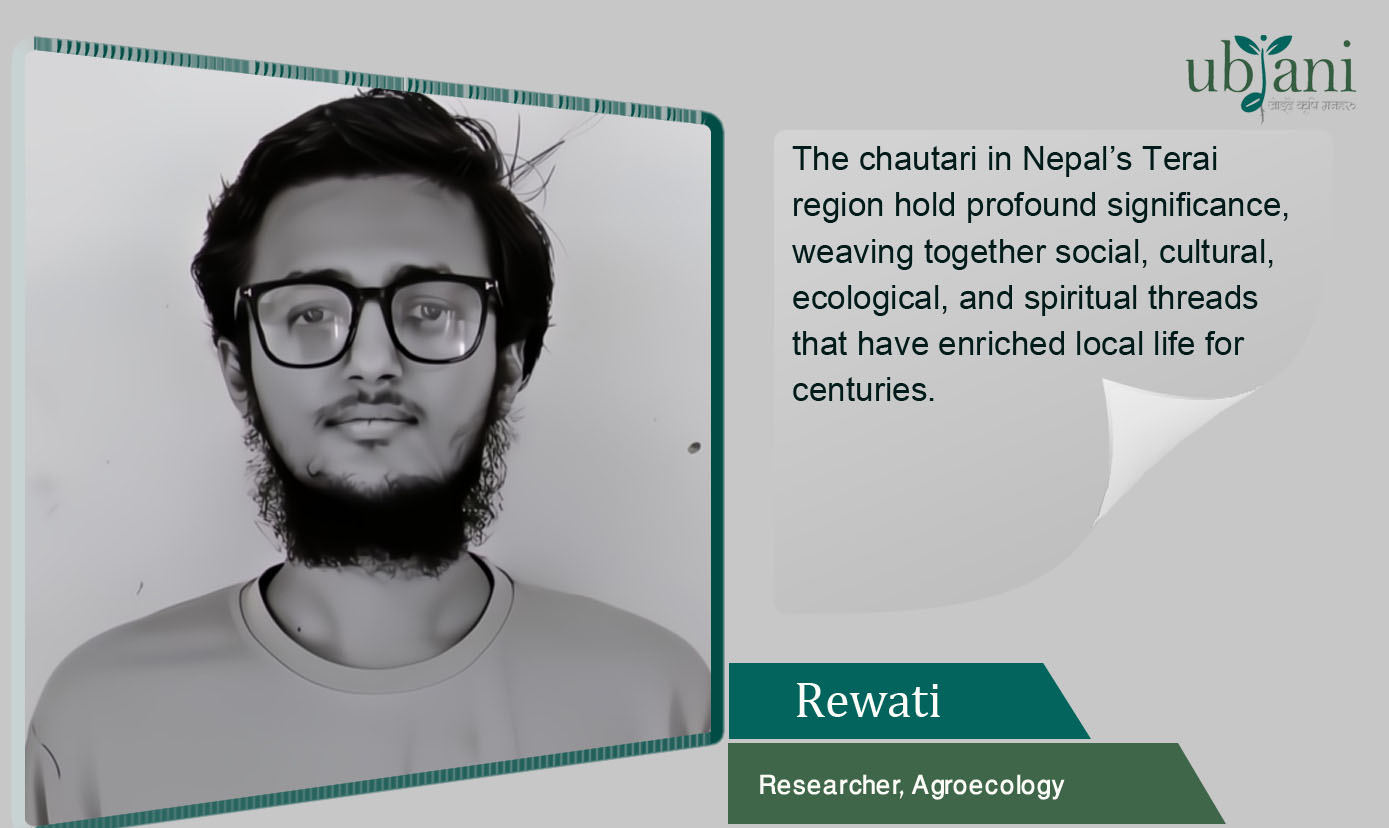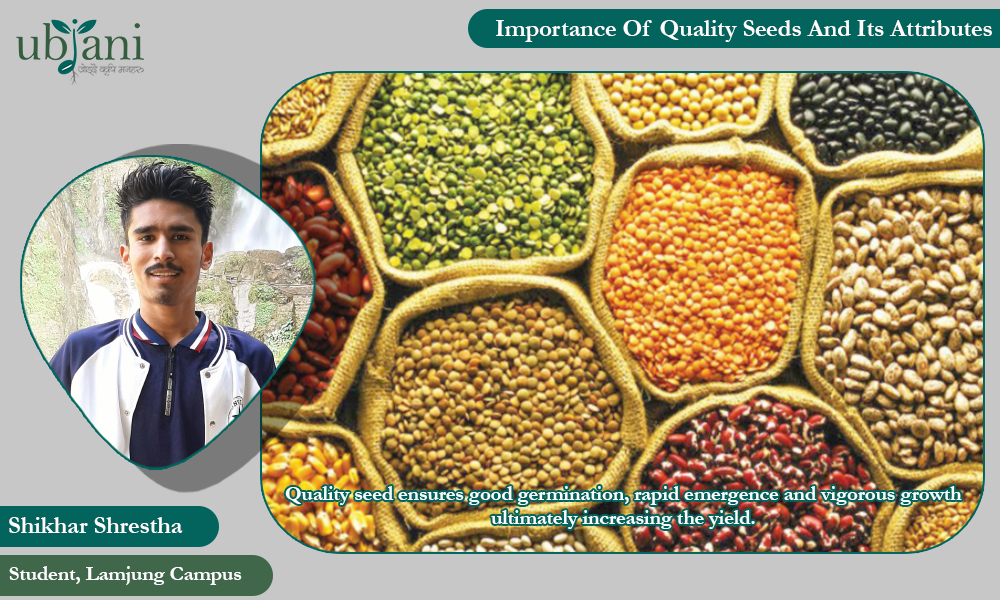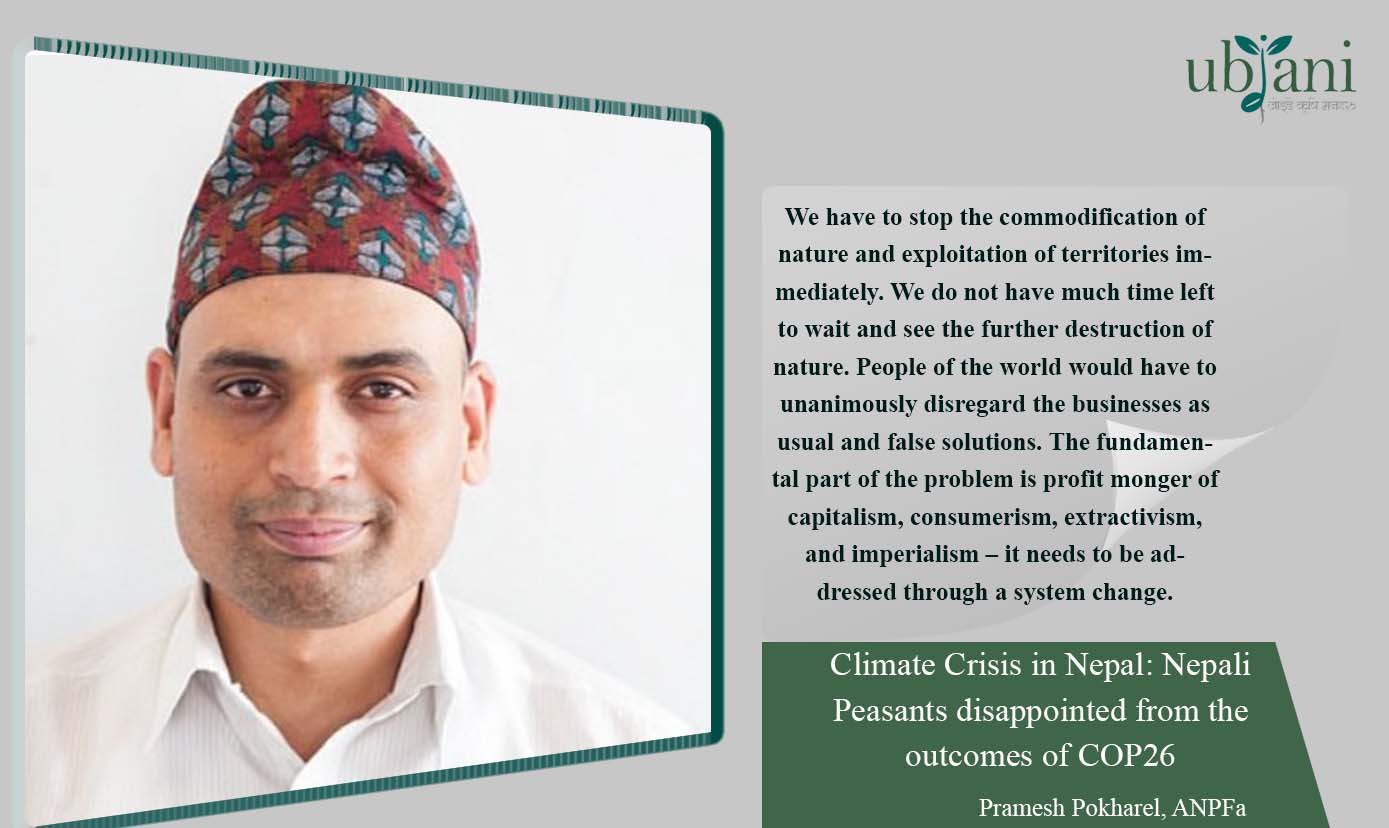
The brunt of climate change is borne by poor people and communities who are most dependent on nature, land, and natural resources for their food, livelihood, fuel, and medicine but less equipped to cope with natural disasters and weather variations. Small-scale food producers in Nepal who are already marginalized due to feudalism, neoliberalism, and socio-cultural hierarchy are further compelled to suffer most due to the climate crisis. Due to the fragile mountain ecosystem, weak geological condition, poor economic efficiency, peasants of Nepal are most vulnerable to climate change. Risks are higher in agriculture and other components that constitute the livelihood of the majority of rural populations. This year (2021) has been disastrous to farming communities of Nepal due to the disastrous pre-monsoon and post-monsoon rainfall. Floods and landslides followed by inundation due to sudden and extreme rainfall caused massive loss of human lives, crops, and other properties in Nepal in the last week of November this year. The death toll from landslides and floods triggered by days of high rainfall in various parts of the country was over hundred in the month of October this year. The death toll as well as loss and damage from climate induced disaster has rapidly increased for the last 20 years (Practical Action, 2021).
The intensity and massiveness of loss and damage due to climate criris is huge. The clear picture of this year’s post monsoon impacts are enough to overview the suffering. Sudurpaschim (Far West) Province of Nepal was hit hardest by the disaster brought upon by an unseasonal rainfall this year and it is reported that around 2,600 people have been displaced by the floods in Bhimdutta and Dodhara Chandani municipalities only. Around 2,232 houses were inundated due to the floods in various places. In Bardiya alone, more than 1,000 houses were inundated in Rajapur Municipality and Geruwa Rural municipality when the flooded Karnali River entered the settlements. In Janakpur, a historical town in Dhanusha district, several places were waterlogged due to the continuous rainfall. Officials said properties worth millions of rupees were damaged. Landslides triggered by heavy rains also disrupted vehicular movement. The Mahakali River has swelled to highest level in 92 years. The water level was measured at 547,224 cusecs in October 2021. Earlier in 2013, the water level had reached 544,476 cusecs.
Due to the extreme and unexpected autumn rain in October 2021, thousands of farmers across the country lost their paddy crops. Thousands of tonnes of ripened crop was ruined. According to an estimate of the Ministry of Agriculture and Livestock Development, total losses in the agriculture sector, including livestock destruction, has reach Rs. 10 billion (83 million US$) impacting the economic growth by a reduction of around 0.5 percent. Paddy alone contributes around 7 percent to the national gross domestic product of Nepal. Farmers are worried that their debts will increase further this year. The situation was already worsened by COVID-19.
The losses of other physical assets like roads, bridges, and infrastructure are also huge. In addition, several hydropower projects in Nepal have been affected by the flood. Similar devastation was witnessed in Melamchi and Manang in pre-monsoon May/June 2021 due to heavy rainfall and that had flooded and wiped out farms of rice farming communities. The peasants’ communities, who lost their family members, the farmland, and homes, had to wait for the relief and support for more than 6 months.
In Nepal, more than 80% of precipitation occurs in the monsoon from June to September. More than 75% of the land is unirrigated. More than 67% people directly engaged in the agriculture. Most of them are small and marginal farmers.
We have observed changes in the rainfall pattern, which is severely affecting the paddy production in the country. Rainfall has become unpredictable while pre-monsoon or Post Monsoon rainfall is active.
Shifts in agro-ecological zones, prolonged dry spells, and higher incidence of pests and diseases are also observed. There are increased incidences of fire in this recent years resulting in theloss of large areas of productive forestland. In certain parts of the country, there are no rains and in other, the agricultural fields are flooded with heavy rains.
There is a significant reduction in the production of paddy and cereals mainly due to these changes. Lack of rainfall is resulting in the lesser area of land being cultivated whereas heavy and untimely rainfall is resulting in the decreased yield of food crops. Food security as well as the livelihood security of the country at large is under threat due to the changing climatic patterns.
There was some hope during COP21 in Paris: every country agreed to work together to limit global warming to well below 2 degrees and aim for 1.5 degrees, to adapt to the impacts of a changing climate, and to make funds available to deliver on these aims. Under the Paris Agreement, countries committed to bringing forward national plans setting out how much they would reduce their emissions – known as Nationally Determined Contributions (NDCs). As Nepal has been actively participating in all COP processes, we wanted to display a strong commitment towards Climate Justice. Accordingly, Nepal formulated policies like, National Climate Change Policy 2019, Environment Protection Act 2019 and Regulations 2020, National Framework for Local Adaptation Plan of Action 2019, Climate Resilient Planning and Budgeting Guidelines 2020, Gender and Social Inclusion (GESI) and Climate Change Strategy and Action Plan 2020, and submitted its second Nationally Determined Contribution (NDC) in 2020.
Climate change has undoubtedly become a great problem for a country like Nepal due to its fragile mountain ecosystem, weak geological condition, and diverse nature of climate. Indigenous and scheduled caste people most vulnerable as they are economically oppressed and are mostly dependent on natural resources for their livelihood. On one hand, the poor communities are facing deep impacts of climate change and on the other; they are pushed into a further trap by the “false solutions” offered by the corporates. Most of the communities still lack appropriate climate information. The use of traditional practices to cope with changes is challenged by the present politico-economy and in the name of modern practices. The use of local seed diversity, multi-cropping, use of organic manure, local practices, and skills of natural farming have been destroyed by the neoliberal market approach. The focus of the government and non-government agencies are mostly on subsidizing the chemical fertilizer and high input-oriented agriculture, which is only benefitting the agri-business corporates, make the lives of the poor farmers more vulnerable.
Against this injustice and inequality, the farmer’s movement in Nepal and South Asia are raising their voices with the slogan of Climate Justice. All Nepal Peasants Federation (ANPFa) has been launching an awareness campaign and training activities. The objective is to inform the farmers on how to reduce risks and to help them prepare adaptation strategies. The training focusses on the use of science and technology for weather forecast, and practicing agroecology as a resilient way of agriculture. There is a loud call for climate justice, which demands the industrialized countries to own their responsibility.
Apparently, the climate justice movement in South Asia is gaining momentum. La via Campesina, Food Sovereignty Network South Asia, South Asian Peasants Coalition, South Asia Alliance for Poverty Eradication (SAAPE) are few networks that are actively advocating the system change to deal with the climate change. The efforts of Rosa Luxemburg Stiftung is very important in this regard. There is a strong voice to rapidly decarbonize the energy system, a major step that needs to be undertaken especially by the industrialized countries. The farmer’s movement in South Asia in general and Nepal, in particular, are against the high input and high energy model of industrial agriculture. For them agroecology and food sovereignty are the driving principals for sustainability in farming. ‘Just transition’, climate stabilization, climate justice, shift away from coal, oil, and gas to renewable, decentralized energy systems etc. are key proposals of the movements and organizations in Nepal. It is important to note that the struggle for climate justice is not just a technical or environmental movement but also a broader political and economic struggle. It is a call against the system, which has devastating impacts on the entire planet.
Like many of us, peasant communities in Nepal were expecting positive developments and concrete steps towards Climate Justice from the COP26 at Glasgow. There was a big hope that it will come up with something concrete in terms of climate finance and a firm commitment of capitalist countries. We were expecting good progress towards the implementation of the Paris Agreement. However, the COP26 turned into a business as usual mode again. The capitalist countries and powerful economies of the west did not seem much worried about the future of humanity. There was hardly any concrete plan to save the planet. COP26 was again captured by the corporations and elites who acted against the expectations of millions of people who are already victims of the climate crisis. Therefore, it is essential now that the working-class of the world is united in their actions and struggles for climate justice. We have to stop the commodification of nature and exploitation of territories immediately. We do not have much time left to wait and see the further destruction of nature. People of the world would have to unanimously disregard the businesses as usual and false solutions. The fundamental part of the problem is profit monger of capitalism, consumerism, extractives, and imperialism – it needs to be addressed through a system change. There should be effective and full participation in all processes of decision-making and benefit sharing of the peasant communities and other stakeholders. We demand Commitment (in mitigation, adaptation, Finance, and Collaboration) from the industrialist and capitalist countries. The capacity of the people in developing countries should be built and technology should be transferred. Industrial agriculture, corporate loot of resources, and chemical farming are a major threat to ecology, peasants’ agriculture, and sustainability. We should value the role and importance of agroecology and family farming in climate change adaptation and biodiversity conservation. Peasants’ agriculture cools the planet.


